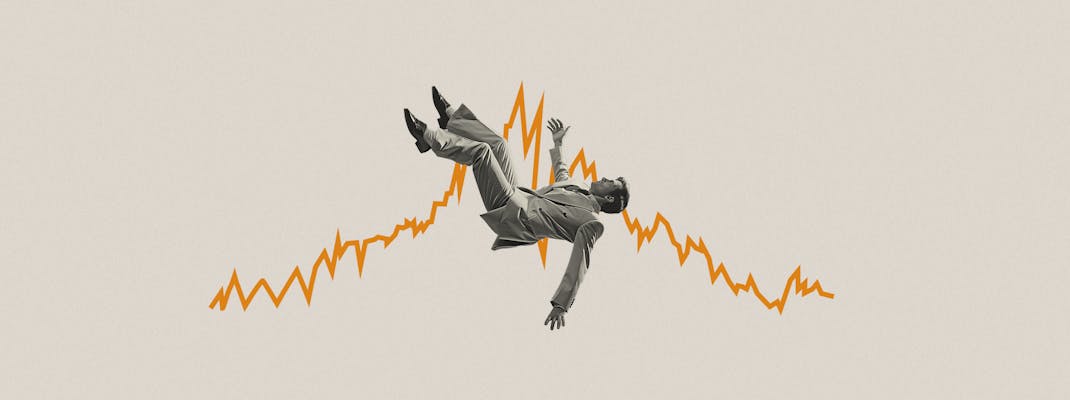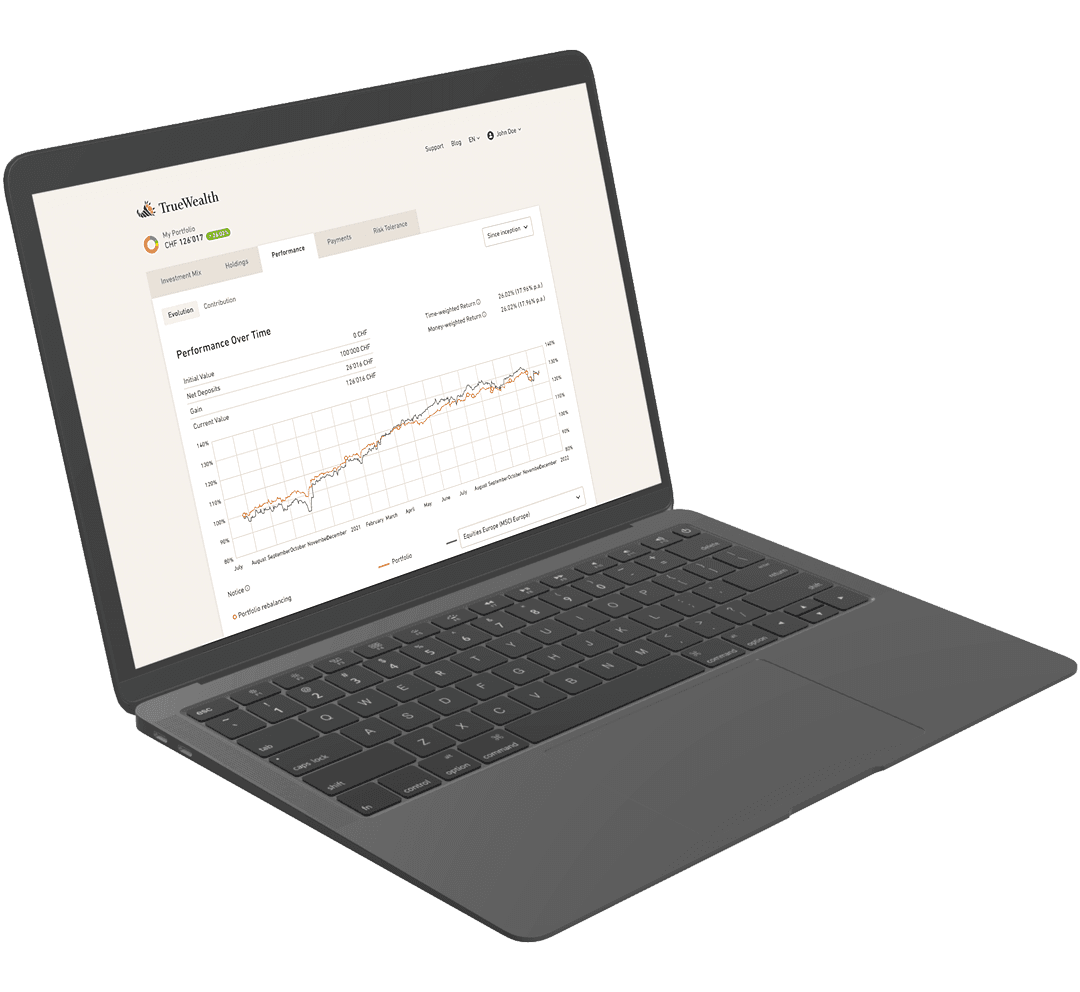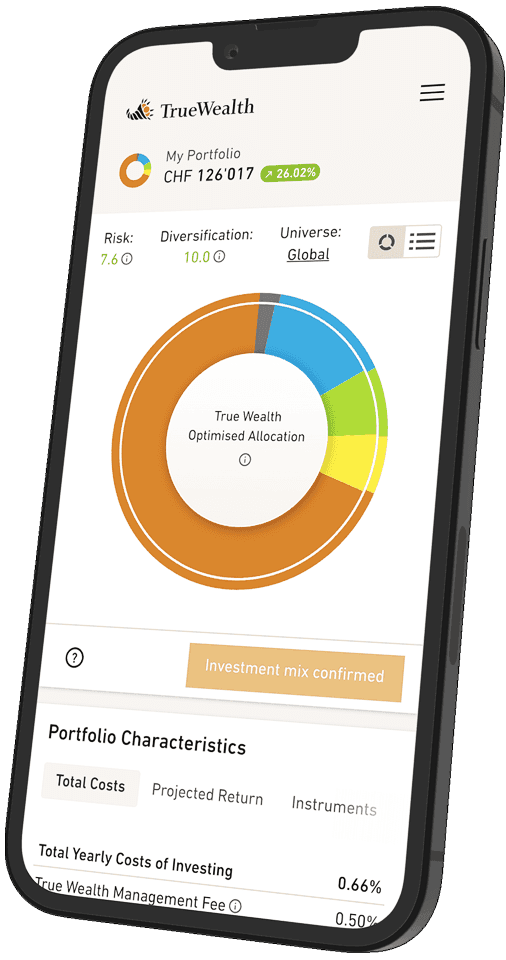
Drawdown: How much loss can you afford?
Stocks yield better returns than other investments. But corrections are part of the market. Be honest: can you lose as much as you want to win?
Equities offer better returns than other asset classes. But corrections are part of the market. Sometimes there is even a real crash. This is not so bad for long-term investors – as long as you don't panic at the wrong moment.
Anyone who wants to invest in equities must remember, as with any game: you have to be able to lose to win. But: can you lose as much as you want to win?
Downturns in the stock market don't happen quite often enough to set a clock to them. But they are part of the stock market cycle. Historically, equities have nevertheless yielded the highest returns of all asset classes. Often, it is not only the crash that is steep, but also the recovery afterwards.
Let's take a look at this in practice. The S&P 500 Index contains 500 American stocks. The price data goes back to 1871 – ideal for a long-term retrospective. We have calculated the index including dividends. This means that all dividends distributed are reinvested in shares.
S&P 500: performance and maximum drawdown
Losses of 50 percent or more are also conceivable for an investor who has been investing in stocks all their life. With gallows humor, one could also say: “Anyone who invests in stocks regularly loses half.”
The good news is that none of the periods of loss of 20 percent or more lasted longer than 13 years. That's the maximum time it took for the investment to recover from the losses – and finally rise above the previous peak for the first time. In most cases, the recovery was much faster.
No loss, just a drawdown
Portfolio managers even have a term for these dips in the portfolio: drawdown. A loss pulls us down – this can also be seen emotionally. Perhaps it just spoils our mood a little. Or perhaps it causes us to panic. It's best to be prepared for the fact that we will react emotionally. We should prepare ourselves mentally for this – because a loss will come. There is no question of whether. Only when.
If we could, we would probably all prefer to buy only at the low and sell only at the high. But market timing is very difficult. Even most professionals don't succeed.
But market timing is not necessary. The main thing is to stay invested. And that's why you are also in the recovery. Because with the profits from the recovery, the losses from the crash fade in retrospect. Just a hiccup over time.
The only question is: can you hold out through the drawdown?
You have to, because if you don't recover, you'll miss out on the opportunity. If you get scared when the price drops, there is a high risk that you will sell at the worst possible time. You will then probably be one of the biggest losers in the game of market timing – and sell your shares to the laughing winners at exactly the wrong time.
Yes, there are indeed winners. Later on, you will also learn how you can be one of them. But first, back to the question: can you withstand the drawdown?
How much loss can you bear?
Can you withstand a 50 percent loss without intervening in your portfolio? At a 30 percent loss, have you reached the point where you just have to do something? Or do you sell your shares at the first sign of turbulence of 10 percent?
If you manage your portfolio with us, then you are familiar with the process: we define your risk tolerance together with you in a detailed questionnaire. And we do this before you start investing. And preferably once and for all. If your financial circumstances do not change, you should stick with it.
If you can't stand losing half, then you shouldn't put 100 percent of your money into stocks. Is your loss tolerance lower? Then you should also hold assets from other classes in your portfolio. Bonds, for example, do not fluctuate as much.
Exactly how high should the equity component be in your portfolio?
We calculate this automatically based on your risk tolerance. Of course, not just for equities, but also for all other asset classes. Later, we regularly use a process called rebalancing to return the proportions to your personal investment mix. This is also called constant proportion.
Incidentally, constant proportion also means that when the market corrects, we automatically buy more of the asset classes that have suffered the most for you. The money for this comes from the sale of assets that have performed better. This is how everyone's favorite saying goes: buy low, sell high. No forecasts, no market timing, anti-cyclical and fully automatic. Those who hold out during the drawdown get a double reward: the profit from the recovery after the drawdown and the return on their additional purchases.
Be honest with yourself
You can get this reward too, but only if you don't panic and stay invested. Here you have to be brutally honest with yourself for a moment: how cool will you really be when the crash comes?
Imagine your portfolio. Don't just think in percentages. Calculate in absolute figures what it means if your assets shrink. Perhaps even by half. Do you still come up with the same result as when you opened your account?
If not, it might be worth redefining your risk tolerance. You will find the link to do this on the 'Risk tolerance' page when you log in. This way you can be sure that you are selecting the right strategy for us. We will then take care of implementing it precisely, even in stormy times, and keep your portfolio on track with rebalancing.
An earlier version of this article was published on 15/02/2018.
About the author

Founder and CEO of True Wealth. After graduating from the Swiss Federal Institute of Technology (ETH) as a physicist, Felix first spent several years in Swiss industry and then four years with a major reinsurance company in portfolio management and risk modeling.

Ready to invest?
Open accountNot sure how to start? Open a test account and upgrade to a full account later.
Open test account